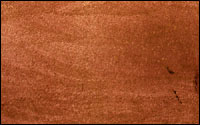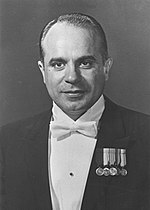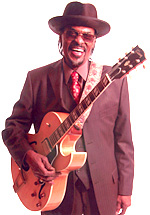List of District of Columbia symbols
From Wikipedia, the free encyclopedia
This is a list of symbols of the District of Columbia.

Insignia
| Type | Symbol | Adopted | Image | Ref. |
|---|---|---|---|---|
| Flag | Flag of the District of Columbia | 1938[1] |  |
[2] |
| Seal | Seal of the District of Columbia | 1871 |  |
[1] |
| Coat of arms | Coat of arms of the District of Columbia | 1871 |  |
|
| Motto | Justitia omnibus (Latin for "Justice for all") |
1871 | — | [1] |
Species
| Type | Symbol | Description | Adopted | Image | Ref. |
|---|---|---|---|---|---|
| Bird | Wood thrush (Hylocichla mustelina) |
1967[1] |  |
||
| Crustacean | Hay's Spring amphipod (Stygobromus hayi) |
2016 | [3] | ||
| Dinosaur | Capitalsaurus |
"Capitalsaurus" is the informal genus name given to a tailbone belonging to a large theropod dinosaur that lived during the Early Cretaceous. It was discovered on 28 January 1898, by construction workers excavating a sewer at the intersection of First and F Streets SE. The only known specimen, it was assigned two different species designations – Creosaurus potens and Dryptosaurus potens – and eventually overturned each time. In the 1990s, the paleontologist Peter Kranz asserted that it represented a unique type of dinosaur and assigned it the name "Capitalsaurus". He successfully campaigned through local schools to make "Capitalsaurus" the official dinosaur of Washington, D.C., which became law in 1998.[4] A year later, the district further recognized F Street at the discovery site as Capitalsaurus Court. It designated 28 January 2001, as Capitalsaurus Day.[5][6]
|
1998 |  |
[7] |
| Fish | American shad (Alosa sapidissima) |
[8] | 2016 |  |
[3] |
| Flower | 'American Beauty' rose (Rosa 'American Beauty') |
[1] | |||
| Fruit | Cherry | 2006 |  |
[9] | |
| Mammal | Big brown bat | 2020 |  |
[10] | |
| Tree | Scarlet oak (Quercus coccinea) |
1960[1] |  |
||
Geology
| Type | Symbol | Description | Adopted | Image | Ref. |
|---|---|---|---|---|---|
| Rock | Potomac bluestone | Potomac bluestone is a metamorphic rock that has been used extensively in the construction of the District of Columbia. It was used as the foundation of the White House, U.S. Capitol, and Washington Monument. Many old houses in the Northwest quadrant, notably the Old Stone House, are constructed out of the rock. | 2014 |  |
[11] |
Culture
| Type | Symbol | Description | Adopted | Image | Ref. |
|---|---|---|---|---|---|
| Beverage | Rickey | At the place of origin of the cocktail, Jack Evans, a city councillor, and Eleanor Holmes Norton, the House delegate for the district, unveiled a plaque honoring the Rickey. It was proclaimed "Washington, D.C.'s native cocktail". July was also declared as Rickey Month in the district. Various news outlets subsequently described the Rickey as the city's official cocktail.[12] | 2011 |  |
[13] |
| Dance | Hand dancing | Hand dancing is a form of swing dance that is derived from the Lindy Hop and the jitterbug. It is characterized by coordinated footwork, spins, and traveling, where the dance partners communicate moves using hand-based connection. Residents of the District of Columbia invented the dance form in the 1950s, but it fell out of favor in the disco era. A Smithsonian Institution exhibit declaring the dance a national art form led to its resurgence in the 1990s.[14] | 1999 |  |
[15] |
| March | "Our Nation's Capitol" by Anthony A. Mitchell | In 1959, Anthony A. Mitchell (pictured), the assistant conductor for the U.S. Navy Band, wrote "Our Nation's Capitol". Robert Enoch McLaughlin, the president of the Board of Commissioners declared it the district's official march in 1961, saying to The Washington Post, "I found it so stirring that for the first time since I left the Naval Academy, I felt like marching." Words were added later by Dixon Redditt.[16] | 1961 |  |
[17] |
| Music | Go-go | Go-go music, a type of funk music with an emphasis on rhythmic patterns and melodic call-and-response sessions, originated within the district's African-American community during the mid-1960s to late-1970s. Chuck Brown (pictured), considered the "godfather of go-go", described it as music with a groovy beat that just "goes and goes", coining the name. Strict curfew laws from the 1980s that targeted youth who attend go-go clubs caused the culture to suffer.[18] Upon recognizing the music as an official symbol, the D.C. Council repealed the curfew laws and required the mayor to develop a preservation plan.[19] | 2020 |  |
[19] |
| Song | "Washington" by Jimmie Dodd | 1951 |  |
[20] |
See also
References
Wikiwand - on
Seamless Wikipedia browsing. On steroids.
